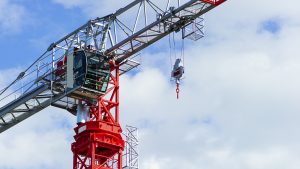RICHMOND, B.C. – WorkSafeBC is indicating an emphasis on inspections in 2024 as time-loss claims rise in British Columbia’s construction sector.
The province’s time-loss claims rate was 24 per cent higher in the construction sector than the provincial average for all other sectors, according to WorkSafeBC statistics.
Across B.C., the time-loss claims rate was 2.40 per 100 workers in 2022, while in construction it was 2.98, a release said.
“Our 2024 inspectional initiatives focus on the sectors that have the highest risk of serious injury, and that includes construction. The goal of our inspectional approach for construction is to work with stakeholders to reduce the risk of injury to workers in the industry,” WorkSafeBC senior manager of prevention field services Suzana Prpic said in a statement.
WorkSafeBC’s inspectional initiative for construction comprises proactive, unannounced inspections, and takes a risk-based approach to ensure the most significant risks are being effectively managed, the release said.
The focus for 2024 is on the following areas:
- Falls from elevation and struck-by mobile equipment, which are the drivers of the most serious injuries in construction.
- Musculoskeletal and repetitive strain injuries, because overexertion injuries are the most frequent type of injury overall in the construction industry.
- Crane and mobile equipment and occupational disease initiatives.
- Active engagement with industry and worker representatives to understand the causes of recent crane-related incidents and to discuss ways to enhance crane safety across the province.
- Occupational disease remained the number one cause of work-related fatalities in 2023. In the construction sector alone, occupational disease claimed the lives of 115 workers between 2019 and 2022.
- WorkSafeBC is also advocating for effective risk management which it terms as critical for worker safety.
“Construction sites are dynamic and constantly changing. That’s why risk assessments and control measures need to continually be reviewed and updated. An effective risk management program must involve ongoing collaboration with workers at every step. You want to ensure your workers feel valued and empowered to contribute to a safer workplace. This not only strengthens the overall health and safety culture but also enhances job satisfaction and productivity,” Prpic said.
As part of its proactive inspectional strategy for construction, WorkSafeBC is working with external stakeholders, such as the B.C. Construction Safety Alliance and BC Crane Safety, to proactively respond to evolving industry challenges and emerging risks, the release said.









Recent Comments
comments for this post are closed